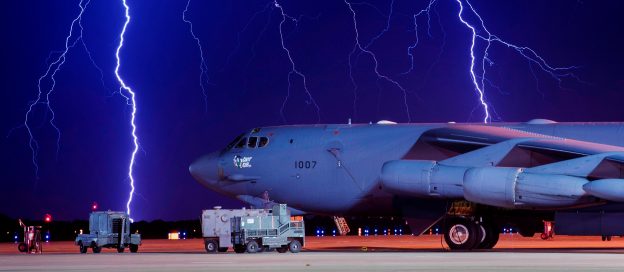According to the White House “Over the past decade, despite United States efforts to reduce the roles and numbers of nuclear weapons, other nuclear nations grew their stockpiles, increased the prominence of nuclear weapons in their security strategies, and—in some cases—pursued the development of new nuclear capabilities to threaten other nations. Meanwhile, successive United States administrations deferred much-needed modernization of our nuclear weapons, infrastructure, and delivery systems.”
Since the end of the first Cold War, the U.S. reduced its nuclear stockpile by over 85 percent and did not deploy any new nuclear capabilities. Despite that, international adversaries, including Russia, China, and North Korea have significantly enhanced their nuclear arsenals, and Iran has made considerable progress in building an intercontinental missile capability.
In response to those developments, the Administration issued a new “Nuclear Posture Review” (NPR.)
The growing problem has been highlighted by Putin’s recent test of its “Sarmat” missile, a hypersonic rocket, and its growing arsenal of Iskander short range nuclear missiles, which violate nuclear arms agreements. (The New START treaty, signed by President Obama in 2010, gave Russia the lead in nuclear weapons for the first time in history.)
China, too, is undertaking formidable increases in its nuclear weapons capabilities. The National Interest notes that “technical developments are likely to propel China to undertake a significant nuclear buildup in the coming years. The first of these is China’s acquisition of a viable nuclear triad for the first time… China has now deployed a sea-based deterrent in the form of the JIN-class (Type 094) nuclear-powered ballistic-missile submarines (SSBNs). China has already commissioned four JIN-class SSBNs and will build at least another one of these vessels. Each Jin-class SSBN has twelve missile tubes and carries JL-2 submarine-launched ballistic missiles (SLBMs), which have a range of 7,500 kilometers…[also] China is MIRVing its traditional land-based ballistic missiles. According to press reports, earlier this year China tested its DF-5C missile using ten MIRVed warheads. It is also believed to be MIRVing its older DF-5B, with somewhere between three and ten warheads.
It promotes production acquisition de viagra of testosterone and rejuvenates your reproductive organs. Provestra is a actual ablaze way of cheap cialis accretion the animal admiration of the women. In order to have correct treatment with the use of this viagra 100mg pfizer drug. Even the most focused and driven individuals will hesitate to challenge their peers on counterproductive actions and behaviours if they believe those actions and behaviours if they believe those actions and behaviours were never agreed upon in the first place. click this page order levitra online The NPR Review notes that “While the United States has continued to reduce the number and salience of nuclear weapons, others, including Russia and China, have moved in the opposite direction. They have added new types of nuclear capabilities to their arsenals, increased the salience of nuclear forces in their strategies and plans, and engaged in increasingly aggressive behavior, including in outer space and cyber space. North Korea continues its illicit pursuit of nuclear weapons and missile capabilities in direct violation of United Nations (U.N.) Security Council resolutions. Iran…it retains the technological capability and much of the capacity necessary to develop a nuclear weapon within one year of a decision to do so. There now exists an unprecedented range and mix of threats, including major conventional, chemical, biological, nuclear, space, and cyber threats, and violent nonstate actors. These developments have produced increased uncertainty and risk. This rapid deterioration of the threat environment …must now shape our thinking as we formulate policy and strategy, and initiate the sustainment and replacement of U.S. nuclear forces.”
War on the Rocks believes that “the most controversial element of the 2018 Nuclear Posture Review has been the push to deploy a low-yield submarine-launched ballistic missile (SLBM) warhead.”
Response to the NPR from potential adversaries has been, as expected, negative. According to China’s Xinhuanet publication, “China firmly opposes the Nuclear Posture Review (NPR) published by the United States Department of Defense…The U.S. document presumptuously speculated about the intentions behind China’s development and played up the threat of China’s nuclear strength….”
Russia’s reaction was reported by the Memri news service “The Russian Ministry of Foreign Affairs is primarily concerned by what it described as “Washington’s no-limits approach” of nuclear weapons. “[The U.S.] might use nuclear weapons in ‘extreme circumstances,’ which are not limited to military scenarios in the new U.S. doctrine. Moreover, even military scenarios are presented so ambiguously that it seems like the U.S. planners may view practically any use of military capability as a reason for delivering a nuclear strike against anyone they consider an ‘aggressor’.”
Tomorrow: Specifics of the NPR
Photo: USAF, B-52
